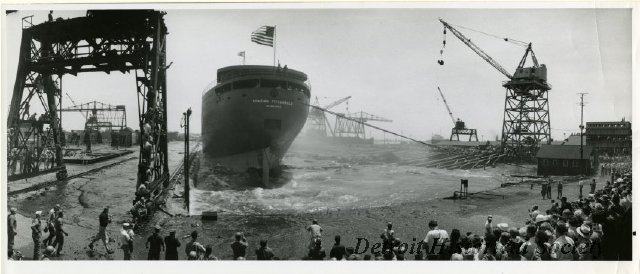The Detroit Video History Archive features nearly 170 hours of newly digitized film footage from 350 pieces of media. It combines rarely seen items from the Detroit Historical Society collection (including promotional materials for the Society and Detroit Historical Museum, public domain third-party footage—such as news reels, amateur and home footage—and promotional material related to local events and businesses) and the collection of the City of Detroit Communications Department, which was acquired by the Society in October 2013. This collection features film items related to city events, public appearances by elected officials, area festivals and celebrations and public access program footage, dating from 1972 to 2010.
After a year of conservation and digitization work by the Society’s collections staff, which was supported by grants from the U.S. Institute of Museum and Library Services and the National Endowment for the Humanities, the first phase of the archive features:
- Two different color films of the 1958 launch of the Edmund Fitzgerald.
- A 1948 color film of theJ.T. Wing being towed to Belle Isle to become the city’s maritime museum.
- Two reels of film shot to document Detroit’s Chinatown, ca. 1962.
- 1950s industrial films detailing the operations of Detroit businesses such as Twin Pines Dairy, Kowalski Sausage and the Burroughs Corporation.
- Color footage of the 1951 parade celebrating the 250th anniversary of Detroit’s founding.
- Detroit Police Department public service announcements from the early 1970s.
- Film shot for Bob-lo Island advertisements in the 1970s, 80s and 90s.
- Footage shot by city videographers of 1980s events such as Hart Plaza’s ethnic festivals, the Detroit Grand Prix and the 1989 Detroit Pistons victory parade.
- Former Detroit Mayors Kilpatrick, Archer and Young at various events.
With sources ranging from reel-to-reel film to u-matic,VHS, betacam and DV, the material in the Detroit History Video Archive is available for the first time digitally, in a searchable and user-friendly interface. It will allow teachers, students, researchers and the general public to more fully experience Detroit’s history in motion.

